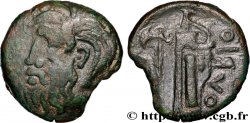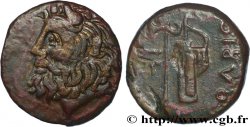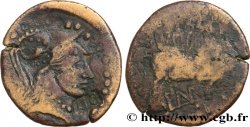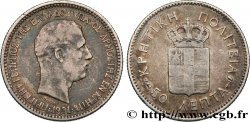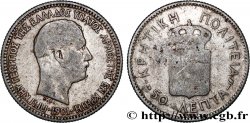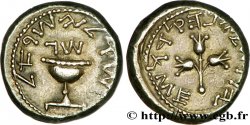v49_0124 - SARMATIA - OLBIA Dauphin
MONNAIES 49 (2011)
Начальная цена : 75.00 €
Назначить цену : 120.00 €
Цена реализации : 135.00 €
Количество ставок : 5
Максимальная предлагаемая цена : 566.00 €
Начальная цена : 75.00 €
Назначить цену : 120.00 €
Цена реализации : 135.00 €
Количество ставок : 5
Максимальная предлагаемая цена : 566.00 €
Тип Dauphin
Дата: c. 500-400 AC.
Монетный двор / Город: Sarmatia, Olbia
Металл: bronze
Диаметр: 25 mm
Вес: 1,13 g.
Редкость: R1
Комментарии о состоянии
Exemplaire effilé, légèrement bombé. Jolie patine vert foncé
Ссылки в каталоге: :
Происхождение:
Cet exemplaire provient du stock de Richelieu Numismatique
Лицевая сторона
Аверс: легенда: ANÉPIGRAPHE.
Аверс: описание: Dauphin à droite avec le nez, l’œil, la nageoire caudale.
Обратная сторона
Комментарий
Dimensions (longueur 25 mm ; largeur 10 mm). Signe pré-monétaire coulé. Ce dauphin est un témoignage à la frontière entre Numismatique et Archéologie. Considéré comme pré-monétaire, ce type d’objet a pu être utilisé par des populations celtes au contact du monde grec à un moment où la monnaie ne s’est pas encore imposée. Les rédacteurs du SNG. de la collection Stancomb de la Mer Noire et de sa région attribuent ces signes pré ou para-monétaires à Olbia où elles ont été trouvées régionalement. Huit exemplaires sont publiés (WSC. 334 à 341 avec des poids compris entre 0,62 g et 2,02 g).
Dimensions (length 25 mm; width 10 mm). Cast pre-monetary sign. This dolphin is a testimony at the border between Numismatics and Archaeology. Considered pre-monetary, this type of object could have been used by Celtic populations in contact with the Greek world at a time when coin had not yet become established. The editors of the SNG. of the Stancomb collection of the Black Sea and its region attribute these pre- or para-monetary signs to Olbia where they were found regionally. Eight examples are published (WSC. 334 to 341 with weights between 0.62 g and 2.02 g)
Dimensions (length 25 mm; width 10 mm). Cast pre-monetary sign. This dolphin is a testimony at the border between Numismatics and Archaeology. Considered pre-monetary, this type of object could have been used by Celtic populations in contact with the Greek world at a time when coin had not yet become established. The editors of the SNG. of the Stancomb collection of the Black Sea and its region attribute these pre- or para-monetary signs to Olbia where they were found regionally. Eight examples are published (WSC. 334 to 341 with weights between 0.62 g and 2.02 g)








 Cообщить об ошибке
Cообщить об ошибке Распечатать страницу
Распечатать страницу Отправить мой выбор
Отправить мой выбор Задать вопрос
Задать вопрос Consign / sell
Consign / sell
 Информация
Информация
